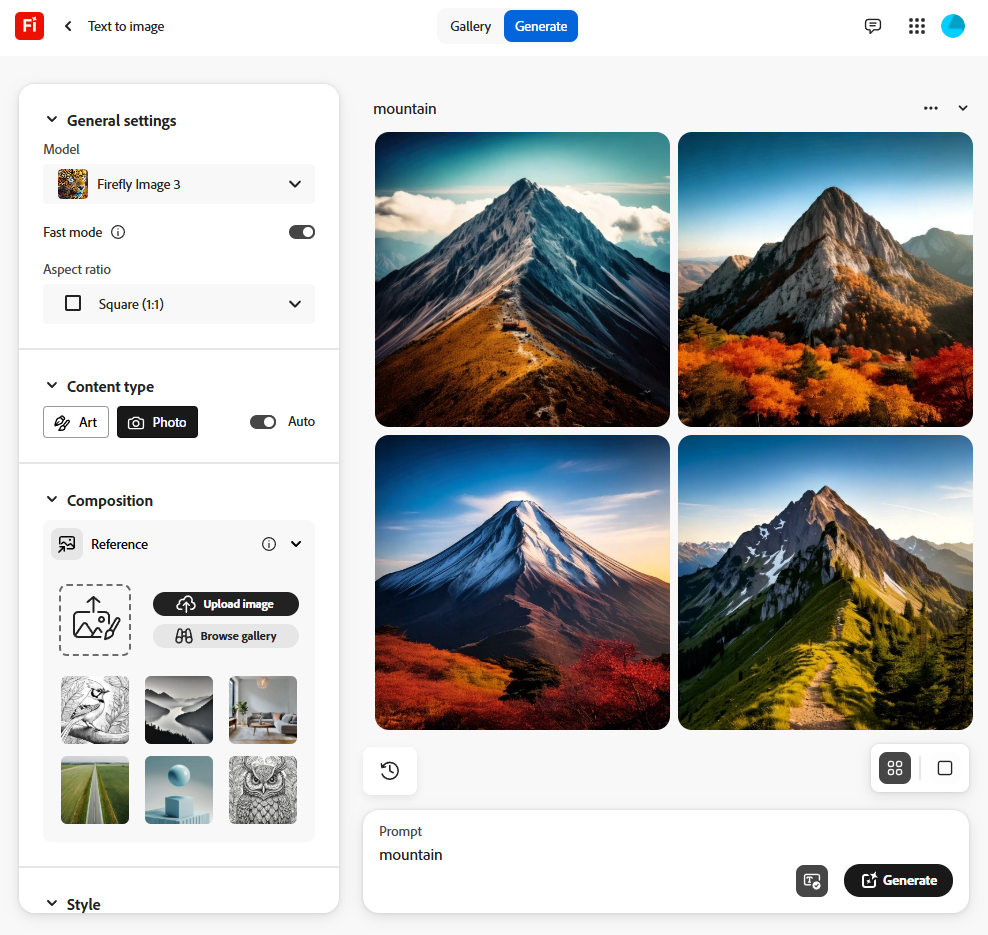Learn the basics of using Generative AI
Generative AI refers to a class of artificial intelligence systems capable of creating content, such as text, images, music, or even videos. In this section you'll learn the basics of how to use GenAI.


Understand GenAI's capabilities and limitations
Familiarise yourself with what each tool can and cannot do. For example, text generators may produce coherent essays at a glance, but may struggle with technical details, coherence, recency and relevance, writing style and more. Image generators may produce what looks like a fully developed image, but on closer inspection it might have artifacts, errors or hallucinations.
Know your tool: Text generators might not be as capable at creating images.
Finally, know the limits of its knowledge: ask Microsoft Copilot when it was last updated, and it'll say, "My knowledge was last updated in October 2023."
(Image prompt: "draw a picture of a cat wearing a hat riding a giant rat fighting a vampire bat", left: ClaudeAI, right: Microsoft Copilot)
Produce the perfect prompt
Precise and Relevant
Use straightforward language that leaves little room for interpretation and include specific details:
“Write an outline for a 10-chapter children's story about a dog that gets lost in the woods while on a walk, and then is guided home with the help of woodland animals.”
Context and boundaries
Include background information to help the AI understand the scenario, and define the scope of the content:
“Create an image in the style of traditional Japanese art of a young woman fishing at the edge of a small village in vertical orientation”
Logical flow
Break down complex requests in a cascading fashion, beginning with the broad request and then adding further information:
“Create a training course for Adobe Photoshop to be taught to beginners by an expert. It will comprise of 8 one hour sessions that cover all areas of the user interface. The end goal of the course is to be competent with the basics of Photoshop.”
Refine and iterate
If the first attempt is not quite what you were looking for, try again with more or better information. If you have a comparison in mind, consider mentioning it:
- “Write a poem about a man named Dave”
- “Write a poem about a man from Bulgaria named Dave, in the style of a Limerick”


The quality of the output generated by AI largely depends on the input prompt. Clear, specific, and well-structured prompts yield better results.
Additionally, thinking carefully about and logically structuring your prompt will require fewer iterations - we already know that the use of Generative AI requires multiple times more computing power than a web search.
(Left: Adobe Firefly generating images from the prompt "Mountain", Right: Adobe Firefly generating images from the prompt "majestic mountain jagged snow-capped, rising above a deep evergreen forest at sunrise with a soft peach coloured sky and fluffy white cloud formations in an artistic oil painting style")
Generative AI can be the start of an idea, but rarely the end...
Kickstart idea production
GenAI can be an excellent starting point for initial ideas, drafts or creative suggestions, helping to overcome writer's block, assist in brainstorming, and save time on routine tasks.
“Write a short agenda for an upcoming meeting with the following topics: upcoming event, complaint, notices, staff updates”
Tailoring and customising
Humans can tailor content to meet specific needs or preferences, amending and enhancing AI output to provide more relevant and accurate information.
Context
AI is great at creating content using patterns and data, but lacks the contextual understanding that humans possess - such as considering cultural and situational contexts, interpretation of nuanced information - and is as yet unable to apply judgement that humans are capable of.